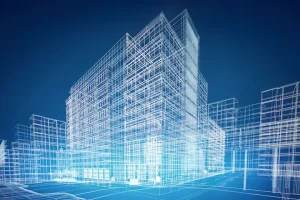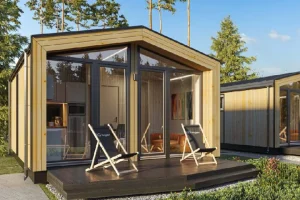In the world of modern construction, the use of advanced and efficient systems for the design and implementation of structures has become particularly important. ICF (Insulated Concrete Form) and LSF (Light Steel Frame) structures are among the technologies that have gained a special place in the construction industry due to their many advantages. Each of these systems has unique features that make them suitable for different types of projects. Today and in this article, we are going to introduce and review the ICF structure from 0 to 100 and provide you with a general comparison of this structure with the LSF structure. Follow us until the end.
What is an ICF structure?
ICF (Insulated Concrete Form) structures are one of the new methods in modern construction that have attracted the attention of many architects and engineers due to their numerous advantages. In this system, permanent forms made of polystyrene foam or similar materials are used as thermal and acoustic insulation. These forms are assembled in the form of blocks or modular panels at the project site and then filled with reinforced concrete. This combination creates a structure with high strength and optimal thermal performance. Due to its integrated design, ICF eliminates the need for separate insulation and reduces costs and implementation time.
ICF structures are very outstanding in terms of energy efficiency and sustainability. By providing strong thermal insulation, these structures significantly reduce energy consumption for heating and cooling the building. In addition, the high resistance of reinforced concrete to pressure and earthquakes makes ICF structures an ideal option for earthquake-prone areas and harsh weather conditions. The superior sound insulation of this system also creates a quiet and suitable environment for living or working. Also, due to its high durability and resistance to fire and moisture, these structures have a longer life than traditional methods. Due to the above-mentioned features, ICF structures offer a combination of strength, energy saving and comfort and are recognized as an advanced choice in modern construction.
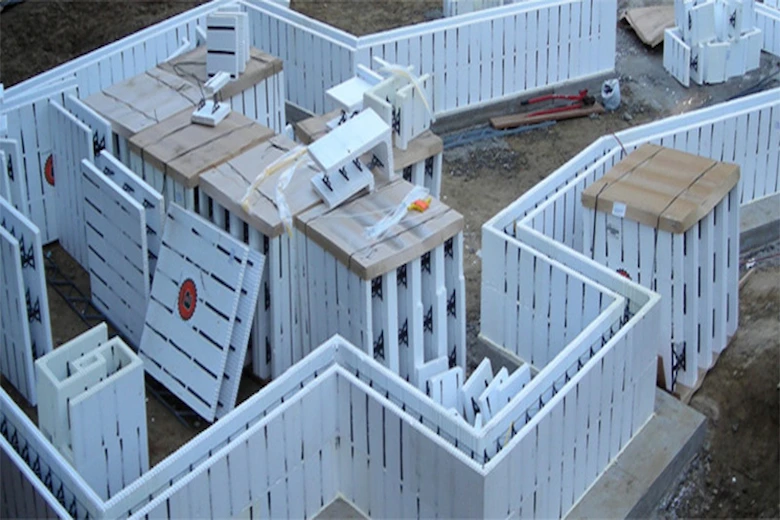
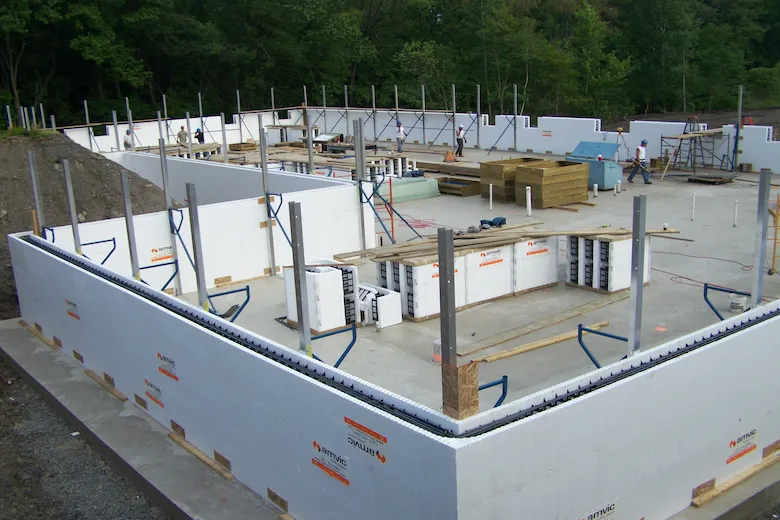
Advantages of using ICF structure
1. Unparalleled thermal insulation
One of the biggest advantages of ICF structures is their excellent thermal insulation. The polystyrene or similar materials used in this system effectively prevent the transfer of heat and cold. This feature makes ICF structures consume much less energy for heating and cooling, which plays a key role in reducing energy costs and protecting the environment. This insulation allows the internal temperature of the building to remain uniform and desirable throughout the year, without the need for high-consumption heating or cooling systems.
2. High resistance to earthquakes and harsh environmental conditions
ICF structures, due to the combination of reinforced concrete and permanent insulating formwork, have a very high resistance to earthquakes and lateral pressures. This system prevents cracking and destruction of the building by evenly distributing the applied forces. In addition, the resistance of concrete to environmental factors such as moisture, frost and strong winds makes these structures an ideal option for earthquake-prone areas and adverse weather conditions.
3. Long-term cost savings
With ICF structures, long-term building costs are significantly reduced. Due to the reduced energy consumption for heating and cooling, homeowners can reduce energy costs over time. Also, the high durability of ICF structures and their resistance to environmental factors such as fire, moisture and pests minimize maintenance and repair costs. These advantages make ICF structures an economically viable long-term investment.
4. Excellent sound insulation
Another outstanding advantage of ICF structures is their sound insulation. The permanent insulating forms of this system have a high ability to reduce sound transmission. This feature makes buildings built with ICF create a quiet and noise-free environment. This advantage is especially valuable in busy urban areas or buildings such as schools and hospitals that require more silence.
5. Speed and ease of construction
The ICF system significantly speeds up the construction process due to the use of modular, prefabricated formwork. The formwork is easily assembled and poured on site, eliminating the need for separate formwork or additional insulation. This speed of construction not only reduces labor costs, but also shortens the time to complete the project. In addition, working with the ICF system requires less skilled labor, which makes the project more economical.


When do we need to use ICF structure?
ICF structures are suitable when the project requires a combination of high strength, energy efficiency, and speed of construction. This system is an ideal option for residential buildings in cold or tropical regions where reducing energy consumption for heating and cooling is important. Also, in projects that require high resistance to earthquakes, humidity, and harsh weather conditions, such as earthquake-prone or heavy rainfall areas, ICF structures offer very good performance. Due to its excellent thermal and acoustic insulation, this system is also suitable for buildings such as schools, hospitals, and hotels that require a quiet environment and temperature control.
In addition, in projects where construction time is limited or less skilled labor is available, ICF structures are a logical choice due to their ease of assembly and high speed of construction. Also, in long-term projects where reducing maintenance costs and increasing the durability of the structure are important, such as commercial buildings or private villas, this system is recommended. In general, ICF structures are an ideal and economical solution when a combination of strength, energy savings, and speed of construction is desired.
Main material in the construction of ICF structure
ICF (Insulated Concrete Form) structures are made up of several main materials, each of which plays its own role in creating the optimal performance of this system. The most important materials used in the construction of ICF structures are:
1. Polystyrene foam (EPS or XPS)
Polystyrene foam, which is mainly used in ICF forms, is the main insulation material in this system. These foams are manufactured in blocks or large panels and act as thermal and acoustic insulation. In addition to having excellent insulating properties, polystyrene foam is lightweight and very easy to install.
2. Reinforced concrete
Reinforced concrete is poured into polystyrene foam molds. This concrete usually consists of cement, sand, aggregates, and steel bars designed to provide strength and resistance to tensile and compressive forces. The reinforced concrete in this system creates a structure that is resistant and stable against earthquakes, pressure, and other environmental factors.
3. Steel rebar
Steel rebar is used to reinforce reinforced concrete. These rebars are placed inside polystyrene foam molds and help strengthen the concrete after it is poured. This combination of steel and concrete increases the strength and resistance of the structure to various forces, including earthquake loads and lateral pressures.
4. Special adhesives and connections
Special adhesives and fasteners are used to connect ICF panels together to create an integrated system. These adhesives and fasteners are made of durable polymers or other special materials that help stabilize the structure and prevent formwork separation or heat transfer.
Comparison of ICF and LSF structures
ICF (Insulated Concrete Form) and LSF (Light Steel Frame) structures are both new technologies in the construction industry that have their own advantages and applications. The main differences between these two systems are in the type of materials, strength, thermal and acoustic performance, and speed of execution. ICF structures have excellent thermal and acoustic performance due to the combination of reinforced concrete and polystyrene insulation or similar. These systems are particularly suitable for areas with harsh climates, earthquakes, or in projects that require high thermal insulation. In addition, the high resistance of concrete to pressure and earthquakes gives these structures a longer life. However, ICF structures may be less suitable for projects that require rapid construction or weight reduction due to the high weight of the concrete.
In contrast, LSF structures using cold-rolled steel are much lighter and faster to construct than ICF systems. This type of structure is more suitable for light and medium-sized projects such as residential and office buildings and is especially useful in earthquake-prone areas due to its high flexibility and reduced seismic forces on the structure. LSF structures typically require separate insulation for thermal and acoustic control and may naturally have lower thermal and acoustic performance than ICF unless additional insulation is used.

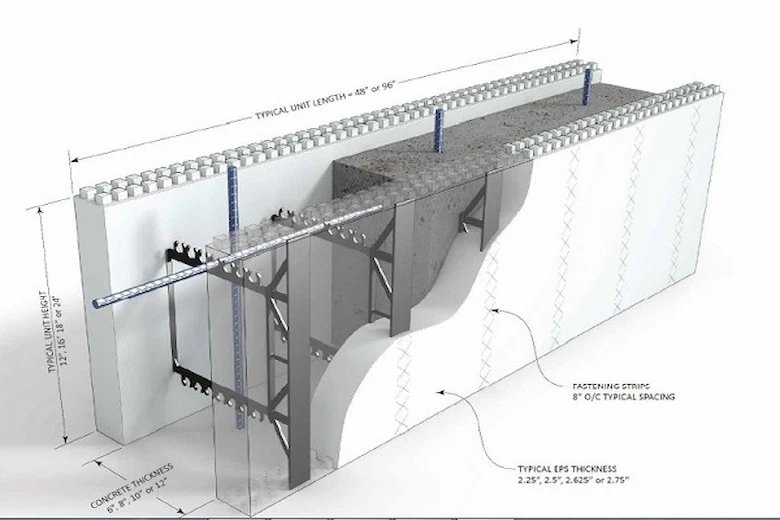
Final Words
As you can see, in this article, we have introduced the ICF structure and compared it with the LSF structure from 0 to 100. Ultimately, the choice between ICF and LSF structures depends on the type of project, environmental conditions, and its specific needs. ICF structures, with their excellent thermal and acoustic insulation and high resistance to natural factors such as earthquakes and moisture, are a suitable option for large projects and areas with difficult conditions. On the other hand, LSF structures, with their high speed of implementation, lower cost, and light weight, are recommended more for light and medium projects and in areas that require more flexibility. A careful examination of the project needs and assessment of environmental conditions can help in the optimal selection of these systems. Thank you for your support until the end of this article, we hope that the information provided has been useful to you.
Ohaddeco Group specializes in the design and implementation of all types of KIT HOUSE built with LSF structures, as well as their internal coverings, including wooden acoustic wall covering and wooden thermowall. Dear friends, you can contact our experts through the communication bridges for more information and free consultation.

